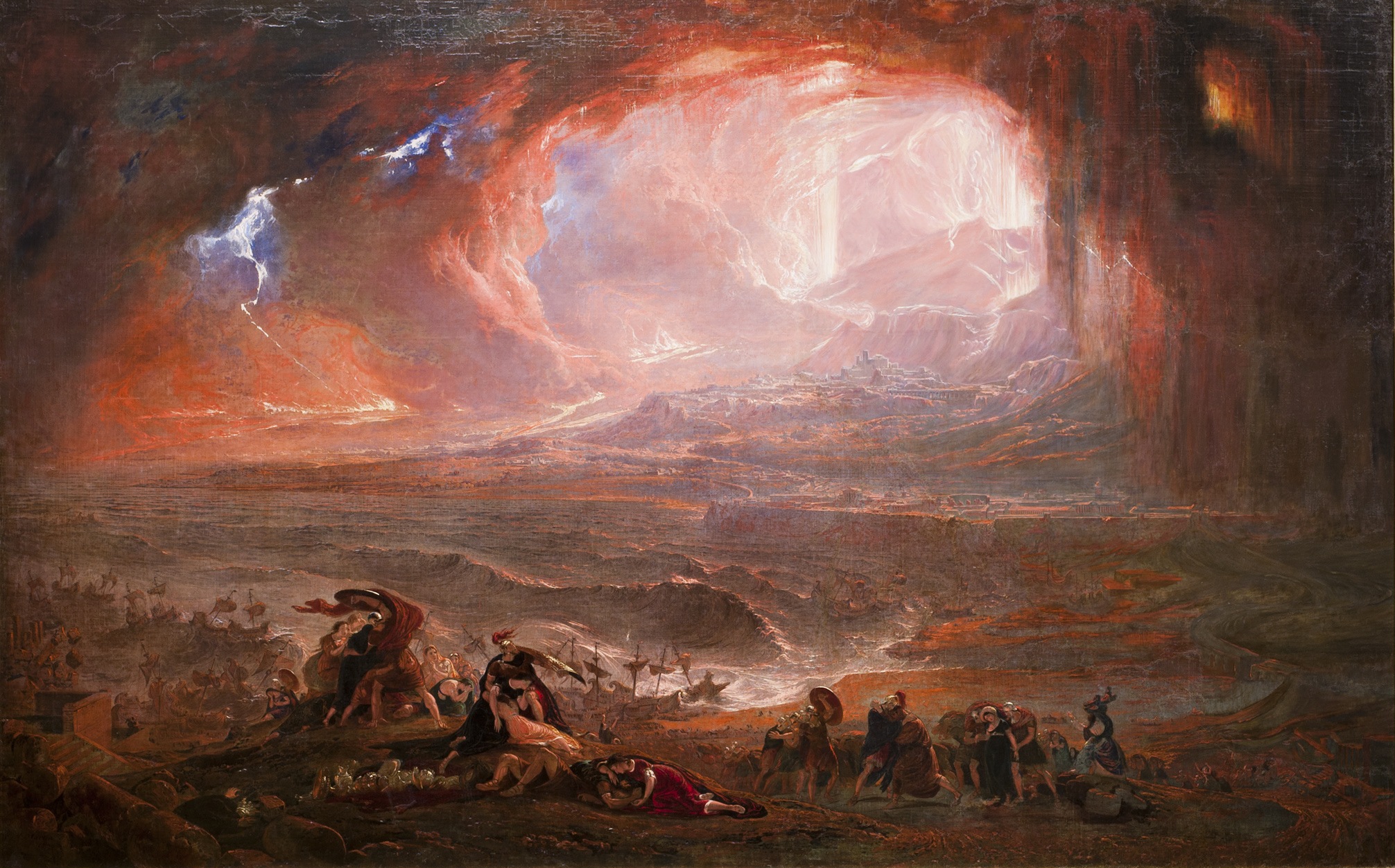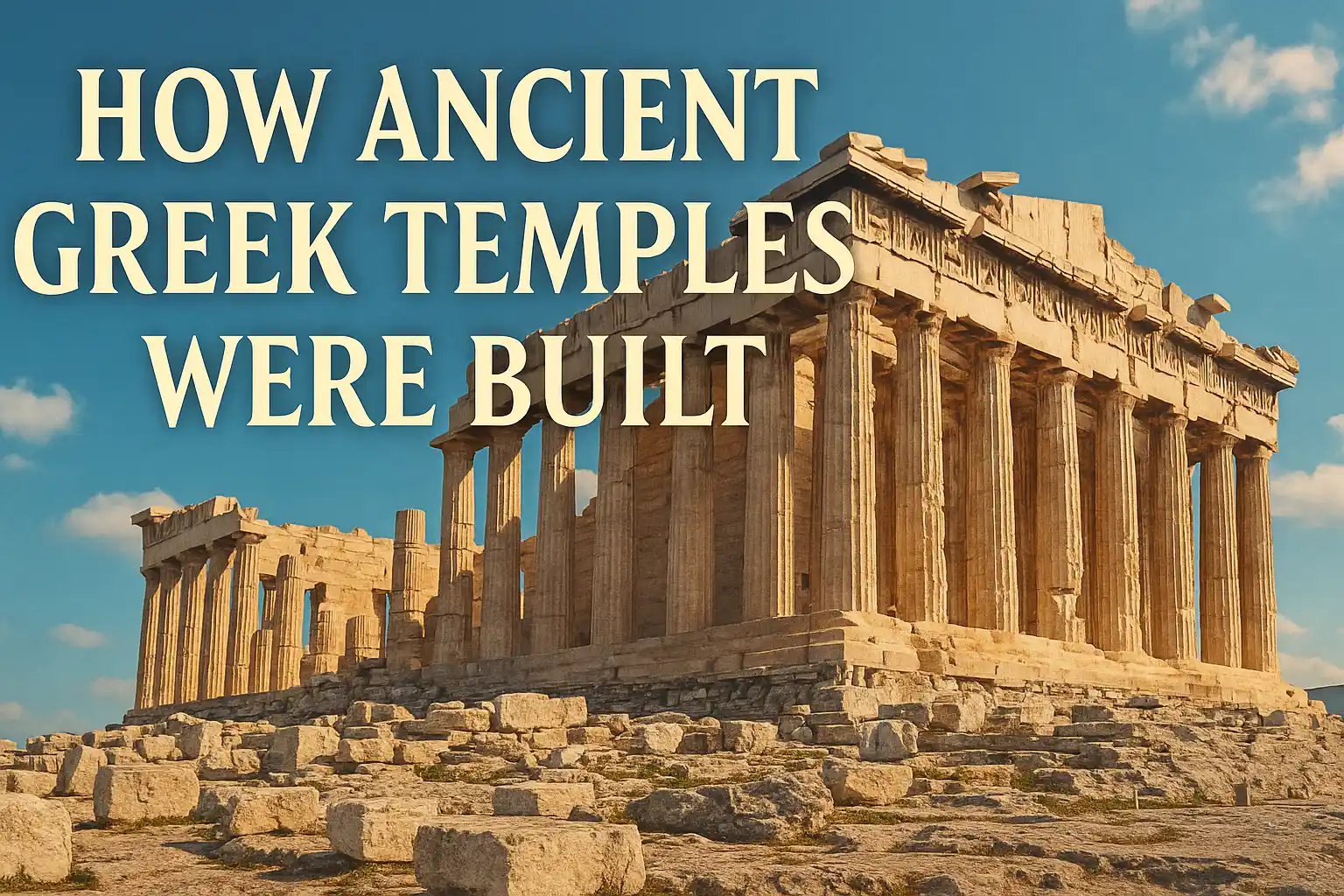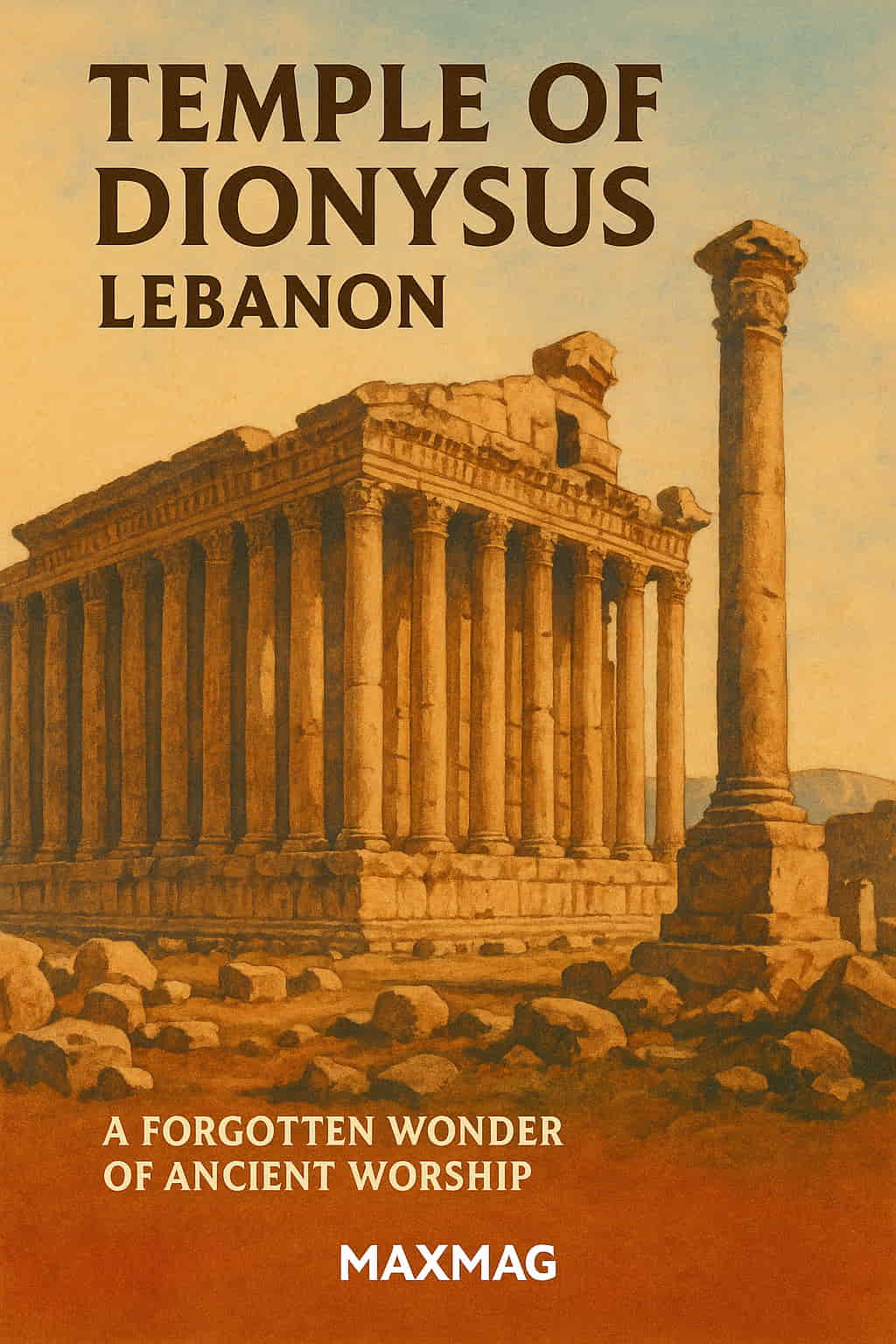
Tucked behind the soaring colonnades of Baalbek’s Temple of Jupiter lies a lesser-known marvel, equally grand in cultural and artistic value: the Temple of Dionysus in Baalbek, Lebanon. Unlike its towering sibling, this sacred structure dedicated to the god of wine and ecstasy is not about overwhelming scale but about intimacy, mythic symbolism, and astonishing preservation. The temple invites modern explorers to experience the Hellenistic-Roman spiritual world through fine reliefs, elegant Ionic columns, and architectural harmony that whispers of both ritual mystery and earthly joy. This article explores the forgotten wonder of the Temple of Dionysus in Baalbek, Lebanon, providing in-depth insight into its origins, structure, historical significance, and enduring legacy.
A Sacred Landscape: Baalbek and Its Mythic Layers
To understand the place of the Temple of Dionysus in Baalbek, Lebanon, one must first view the landscape it inhabits. Located in Lebanon’s Bekaa Valley, Baalbek is one of the most celebrated ancient sites in the Levant. Known in antiquity as Heliopolis—“City of the Sun”—it was a major religious center under Phoenician, Greek, and Roman rule. Over the centuries, it evolved into a complex of interconnected temples devoted to multiple deities, including Jupiter, Venus, and Dionysus.
While the Temple of Jupiter—once the largest Roman temple in the world—remains the most prominent, it is the smaller structures that offer richer insight into daily worship practices and spiritual symbolism. The Temple of Dionysus in Baalbek, Lebanon, situated just south of Jupiter’s compound, reveals the nuanced devotion to the god associated with theater, wine, fertility, and transcendence. Unlike temples devoted to cosmic forces, this one reflects the divine in human experience—pleasure, transformation, and celebration.
Rediscovering Dionysus: The God Behind the Stones
Dionysus, also known by his Roman name Bacchus, was more than just the god of wine. He represented duality—chaos and order, madness and clarity, divine and mortal. Mythologically born from the union of Zeus and Semele, and raised by nymphs, Dionysus’s cult emphasized emotional liberation and spiritual renewal through ecstatic ritual. The Temple of Dionysus in Baalbek, Lebanon was not just a building; it was a gateway to divine immersion.
Devotees of Dionysus sought to enter altered states through music, dance, and wine, temporarily dissolving the ego to commune with the divine. The architecture of the temple reflects this ritualistic aim: its ascending stairs, elaborate reliefs, and high sanctum were physical metaphors for spiritual ascent. Each column, statue, and frieze guided the worshipper away from the mundane and toward the sacred.
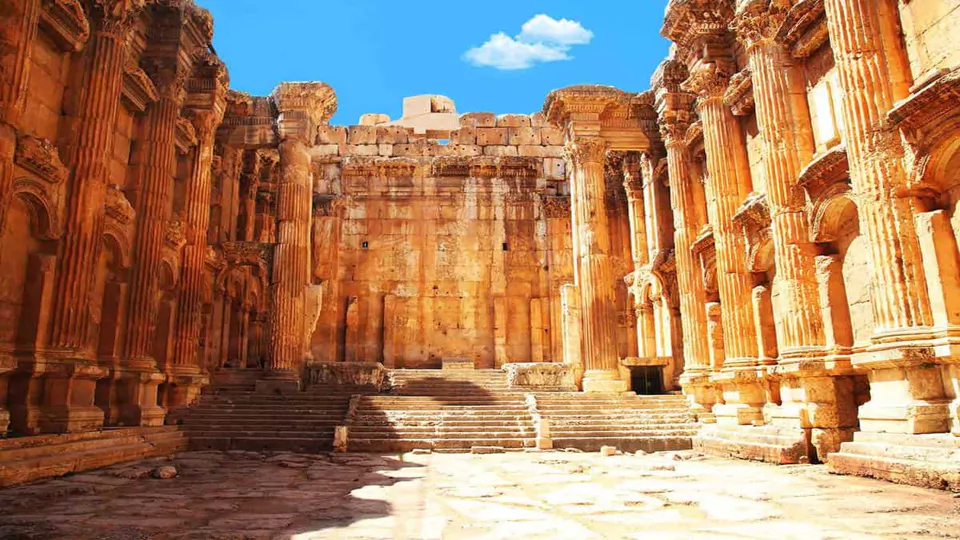
Architectural Grandeur of the Temple of Dionysus in Baalbek, Lebanon
Built in the 2nd century AD, likely during the reign of Emperor Antoninus Pius, the Temple of Dionysus in Baalbek, Lebanon exemplifies the architectural blend of Greek elegance and Roman engineering. Its base stretches approximately 35 meters in length and 19 meters in width. While smaller than the massive Jupiter structure, the temple’s intimate proportions actually enhance its spiritual focus.
Its most notable feature is its Ionic colonnade—42 columns originally encircling the sanctuary, many of which still stand today. These columns create a rhythm of space and light that draws visitors toward the cella, the inner sanctum. The threshold and portal are massive: the entrance stands 13 meters high and 6.5 meters wide, emphasizing grandeur upon arrival.
But it’s the sculptural detailing that makes the temple unique. The inner walls feature friezes that depict scenes from the myth of Dionysus, including his miraculous birth, travels through the East, and triumphant return to Greece. Each carving is finely executed in local limestone, telling stories in silence that remain legible to those who can read their symbols.
Survival Against Time and Conflict
That the Temple of Dionysus in Baalbek, Lebanon has survived the ravages of time, earthquakes, and regional conflict is a marvel in itself. Lebanon’s location—historically contested and seismically active—has resulted in the destruction of many ancient sites. Yet this sanctuary remains relatively intact, thanks in part to conservation efforts led by German archeologists in the early 1900s and later restoration supported by UNESCO.
During the Lebanese Civil War and the Syrian conflict next door, Baalbek’s temples faced potential ruin. However, local commitment to cultural preservation, combined with global recognition, kept them protected. In 1984, UNESCO added the entire Baalbek complex—including the Dionysian temple—to its list of World Heritage Sites.
In recent years, digital preservation efforts, such as the Baalbek Reborn: Temples virtual tour developed by the German Archaeological Institute and Flyover Zone, have enabled global audiences to explore this monument in 3D. You can now examine the temple’s reliefs and colonnades in incredible detail without leaving your home—a major step in democratizing access to endangered heritage.
Explore the Baalbek Reborn platform: Flyover Zone’s Baalbek Virtual Tour
Cultural and Religious Significance in the Roman Era
The Temple of Dionysus in Baalbek, Lebanon wasn’t merely a regional outpost of worship—it was a critical component of the Roman Empire’s broader religious and political strategies. Dionysian cults were widespread, especially among women and lower-class citizens, offering spiritual release from rigid social hierarchies. The temple’s inclusion in the Baalbek triad—alongside the temples of Jupiter and Venus—signified a complete divine pantheon: order, beauty, and transformation.
In the context of Roman religious policy, such temples legitimized imperial rule while absorbing local and Eastern deities. Baalbek’s location on ancient trade routes made it a cultural crossroads where Greco-Roman, Semitic, and Eastern spiritualities merged. The temple was likely used for both public rites and private mystery initiations, preserving secrecy while celebrating joy.
Interestingly, the temple’s rituals influenced early Christian practices as well. The themes of spiritual rebirth, sacramental wine, and symbolic transformation prefigure many Christian sacraments, suggesting a cultural bridge rather than a hard break between ancient and early medieval spirituality.
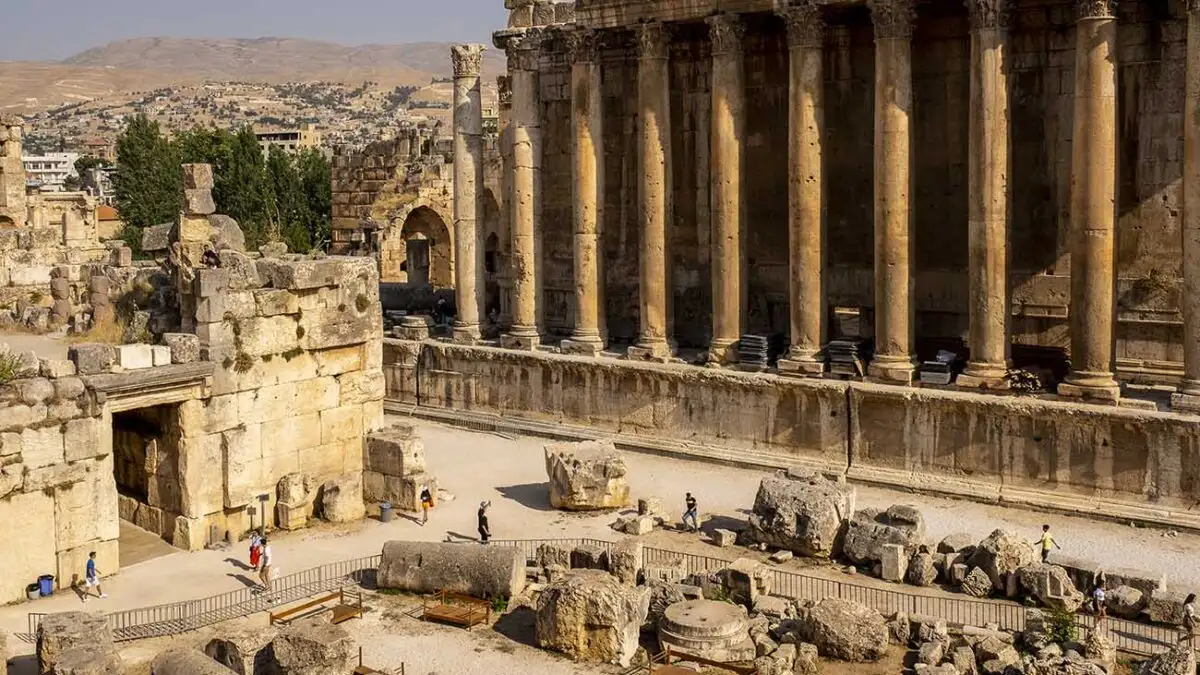
Temple of Dionysus in Baalbek, Lebanon: A Pilgrimage for the Mind and Soul
Travelers to Lebanon who overlook this gem miss one of the most evocative spiritual spaces of the ancient world. Visiting the Temple of Dionysus in Baalbek, Lebanon isn’t just about viewing old stones—it’s about feeling the continuity of human yearning for meaning, transcendence, and celebration.
How to Visit
-
Getting There: Baalbek is approximately 85 km from Beirut. You can reach it via guided tour, private car, or public bus.
-
Hours and Access: The site is open year-round. Mornings offer the best lighting for photography, while late afternoon creates dramatic shadows ideal for contemplation.
-
Guided Tours: Consider hiring an archaeologist guide for a deeper understanding of the site’s symbolism and cultural layers.
-
Nearby Attractions: Include the Temple of Venus and the sprawling Jupiter complex in your itinerary for a full religious journey.
Modern Resonance: Art, Culture, and Inspiration
Beyond archaeology, the Temple of Dionysus in Baalbek, Lebanon continues to inspire modern art and performance. Its spiritual themes echo in theater, poetry, and even psychological practices exploring ecstasy and transcendence. Lebanese artist Walid Raad and others have drawn upon Baalbek’s visual language to interrogate memory and history.
The Baalbek International Festival, one of the oldest music festivals in the Middle East, is held annually in the Roman ruins. The Temple of Dionysus, in particular, has become a favorite backdrop for performances blending classical music, experimental theater, and multimedia installations. In this way, the temple fulfills its ancient function: a space of artistic and spiritual elevation.
H2: Temple of Dionysus in Baalbek, Lebanon and the Global Dialogue on Heritage
In a world grappling with cultural loss, the Temple of Dionysus in Baalbek, Lebanon stands as a beacon of resilience. Its survival is a triumph of cross-border collaboration, local dedication, and technological innovation. As climate change and conflict continue to threaten global heritage, Baalbek teaches us that preservation is not just about stones—it’s about sustaining stories, identity, and continuity.
For cultural institutions, the temple offers a case study in best practices. Organizations like the World Monuments Fund and the Getty Conservation Institute use Baalbek as an example in their policy recommendations. For everyday visitors and virtual explorers, it reminds us of our shared past and the fragility of beauty.
Visit UNESCO’s official Baalbek site page here: UNESCO World Heritage: Baalbek
FAQ (Frequently Asked Questions)
1. What period was the Temple of Dionysus in Baalbek, Lebanon built?
It was constructed during the 2nd century AD, likely under Emperor Antoninus Pius.
2. Why is Dionysus significant in ancient religions?
Dionysus represented transformation, joy, and the blurring of divine-human boundaries. His cult offered emotional and spiritual liberation.
3. What architectural style does the temple follow?
It combines Ionic Greek orders with Roman engineering, emphasizing verticality and intimacy.
4. Is the temple open to the public?
Yes. It is accessible as part of the greater Baalbek archaeological complex, open year-round.
5. Can the temple be explored online?
Absolutely. Through the Baalbek Reborn virtual tour, you can explore 3D reconstructions of the temple and its surroundings.
6. What makes this temple unique among others in Baalbek?
Its focus on human ritual and artistic detail sets it apart from the grandiosity of Jupiter’s temple.
7. Are there any inscriptions inside?
Yes—many reliefs and carvings depict myths and ceremonies related to Dionysus, preserved remarkably well.
8. Was this temple only used for wine-related rituals?
No. While wine was central, the rituals were broader, celebrating fertility, rebirth, and transcendence.

